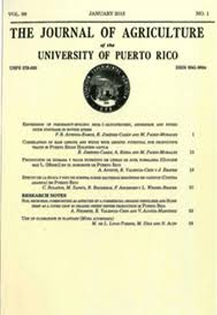Abstract
Agricultural abandonment resulted in the expansion of forests dominated by invasive tree species that were introduced throughout Puerto Rico. These novel forests are increasingly common worldwide but little is known about the drivers and consequences of their expansion. This study describes the geographic distribution and spatial attributes of novel forests dominated by the African tulip tree, Spathodea campanuata Beauv., in north-central Puerto Rico. I used aerial photography to map Spathodea forests, determined their distribution by geological substrate, soil type and previous history, and estimated the area and perimeter to area ratio (P/A) of each patch. The 443 mapped Spathodea forests covered 0.7% of the region, ranged from 0.03 to 9.1 ha (mean=0.5, S.E.=0.03) in area, and from 0.03 to 0.3 m/m2 (mean=0.09, S.E.=0.0002) in P/A. Spathodea forests were more frequent on lands previously used for sugarcane, which are typically on fertile Mollisols on alluvial substrate. Half the Spathodea forests were over 30 years old and those on former sun coffee farms on volcanic extrusive substrate had larger area and lower P/A. Novel Spathodea forests rehabilitate agricultural lands, increase spatial connectivity and create favorable conditions for agroforestry and species restoration interventions, representing an asset for social-ecological resilience to climate change and socio-economic development.

